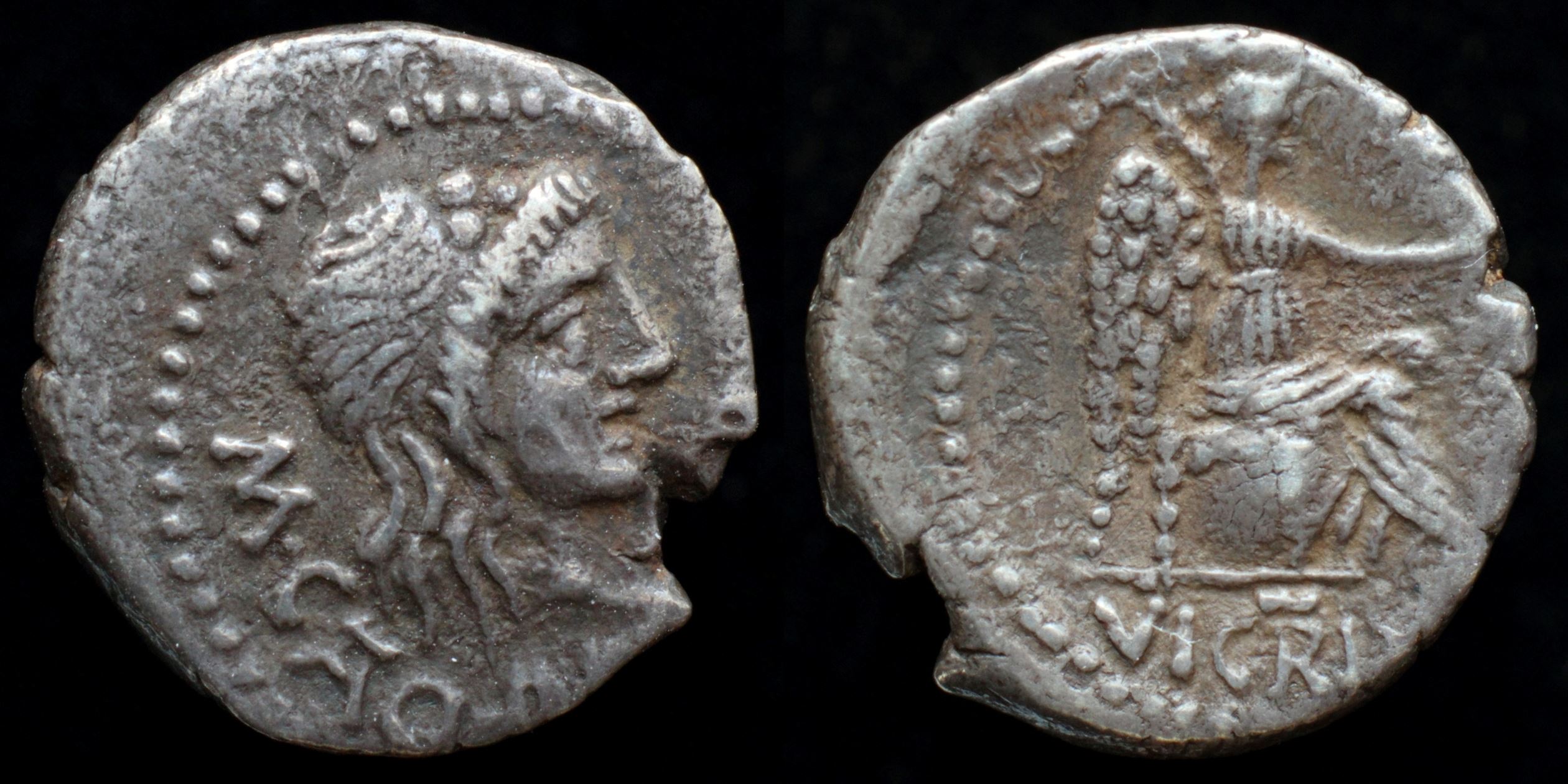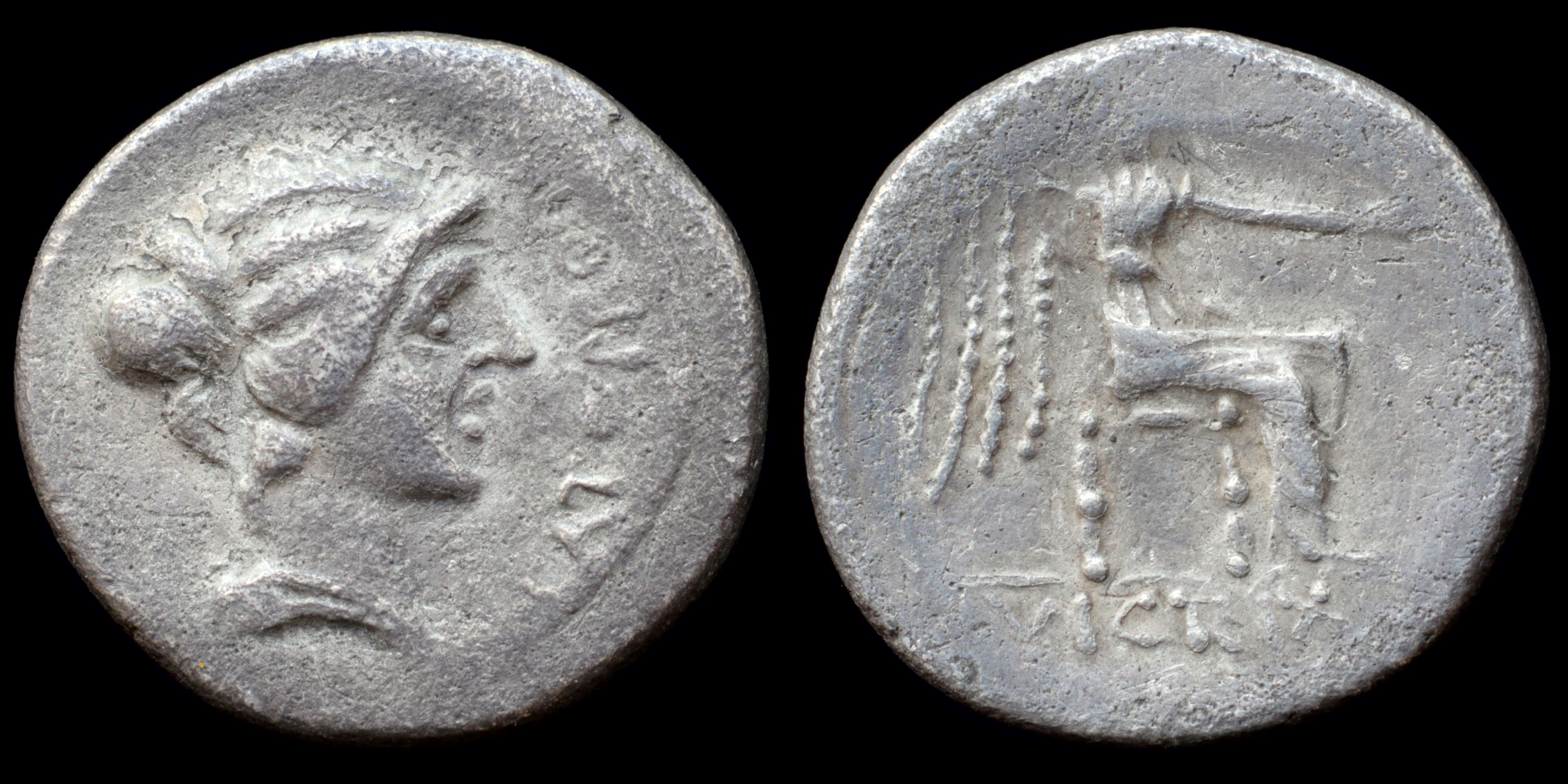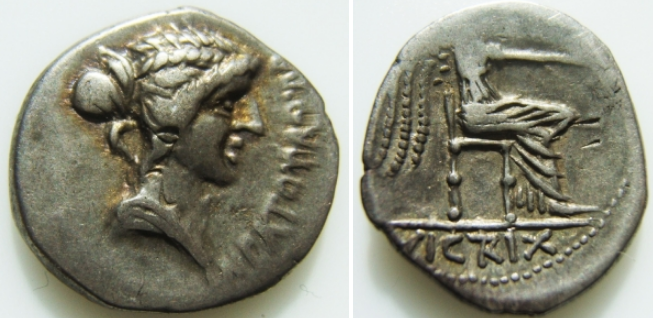It is traditionally considered to be the first colony to have been founded by the Phoenicians in North Africa. The actual founding date of Utica is controversial. Several classical authors date its foundation to around 1100 BC. The archaeological evidence, however, suggests a foundation no earlier than the eighth century BC.
After the defeat of Carthage by Rome, Utica was an important Roman colony for seven centuries. In AD 439, the Vandals captured Utica, in AD 534 the Byzantines captured it once more. Finally the Arabs were responsible for its ultimate destruction around AD 700.
Modern location: Ruins

Reverse: seated Victory right holding patera and palm; VIC(TR)IX
Die Orientation: -
Weight: 1.8 g

Reverse: Victory seated right, holding patera and palm; VIC(TR)IX
Die Orientation: -
Weight: 3.6 g

Reverse: VICTRIX - Victory seated right holding patera, VICTRIX in the ex.
Die Orientation: 3 H
Weight: 3.61 g

Reverse: naked Herakles facing, leaning on club set on rock draped with lion's skin; EPPIVS__LEG·F·C
Die Orientation: -
Weight: 3.8 g
.jpg)
Reverse: P CRASSVS IVN right, LEG PRO P R left - Victory standing left, holding winged caduceus in right hand, small round shield in left
Die Orientation: 12 H
Weight: 3.15 g
During the civil war between Julius Caesar and the senatorial faction led by Pompeius Magnus ("Pompey the Great"), Scipio remained a staunch optimate. He led troops against Caesar's forces, mainly in the battles of Pharsalus and Thapsus, where he was defeated. He later committed suicide. Ronald Syme called him "the last Scipio of any consequence in Roman history."
Roma Numismatics Limited has put forward the thought that it is Tanit in leontocephalic form instead of "Genius of Africa" and the "ankh" is rather the linear female abstract symbol for Tanit. I agree with the rationality behind this, because it looks everything like that symbol and nothing like an anhk, but include the standard attributions as we know them.
